

Untitled (2001) is one of the most relevant examples of Amilcar de Castro’s late trajectory. Still in the 1950s, the sculptor developed a technique ruled by seamless operations, based only on cuts and folds of single metal sheets. Here, the use of weathering steel as raw material, rusting over time, just as the use of irregular geometric figures (rather than circles, squares, and rectangles, as in the previous decades) are part of his interest in the organic aspect.
Blown-up pieces also allow the gaze to pass through such cuts, thus tightening the relationship between inside and outside space.


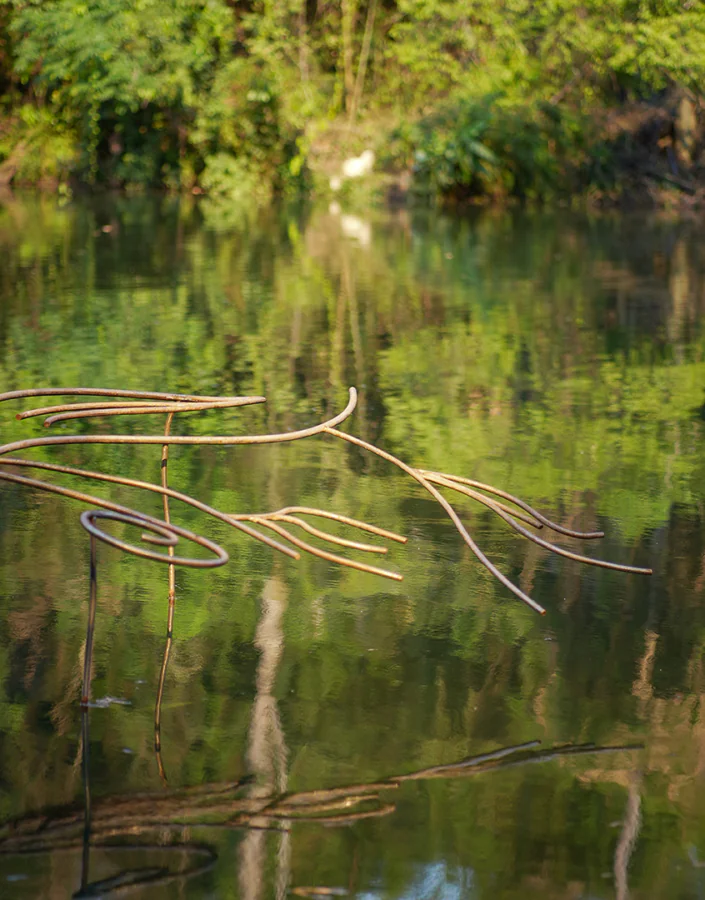
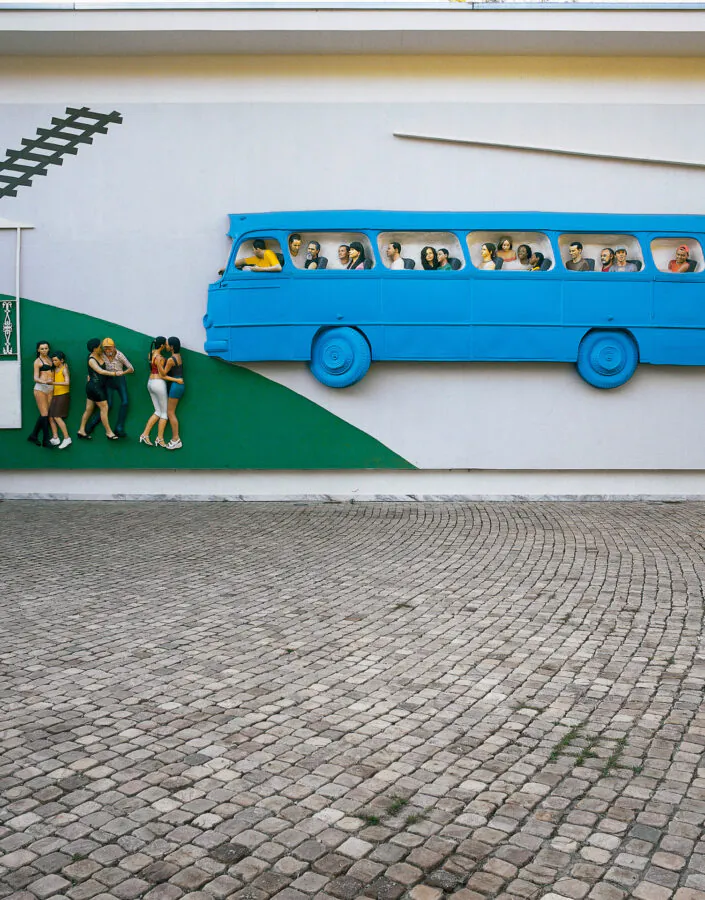
![Chris Burden, Beam Drop Inhotim, 2008, [detalhe], concreto e 71 vigas de aço, 12x12x11 m. Foto: Carol Lopes](https://www.inhotim.org.br/wp-content/uploads/2021/04/inhotim_acervo_beam_drop_chris_burden_1-705x900.jpg.webp)
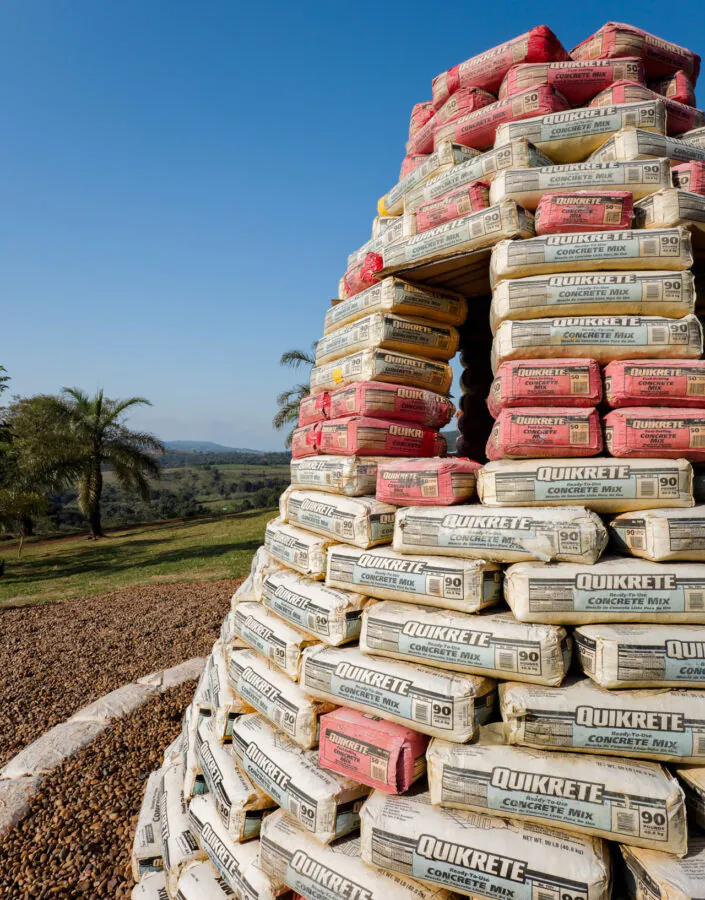
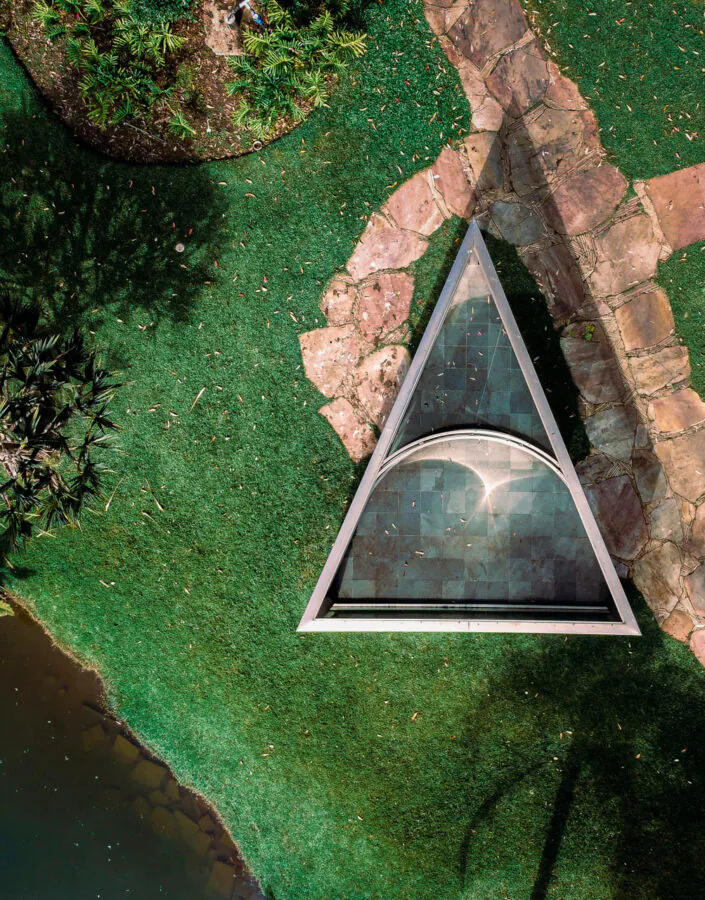
![Olafur Eliasson, By means of a Sudden Intuitive Realization, 1996,[detalhe], iglu de fibra de vidro, água, iluminação estroboscópica, bomba d’água e plástico, 300x510. Foto: William Gomes](https://www.inhotim.org.br/wp-content/uploads/2021/05/inhotim_acervo_by_means_of_-sudden_intuitive_realization_olafur-705x900.jpg.webp)
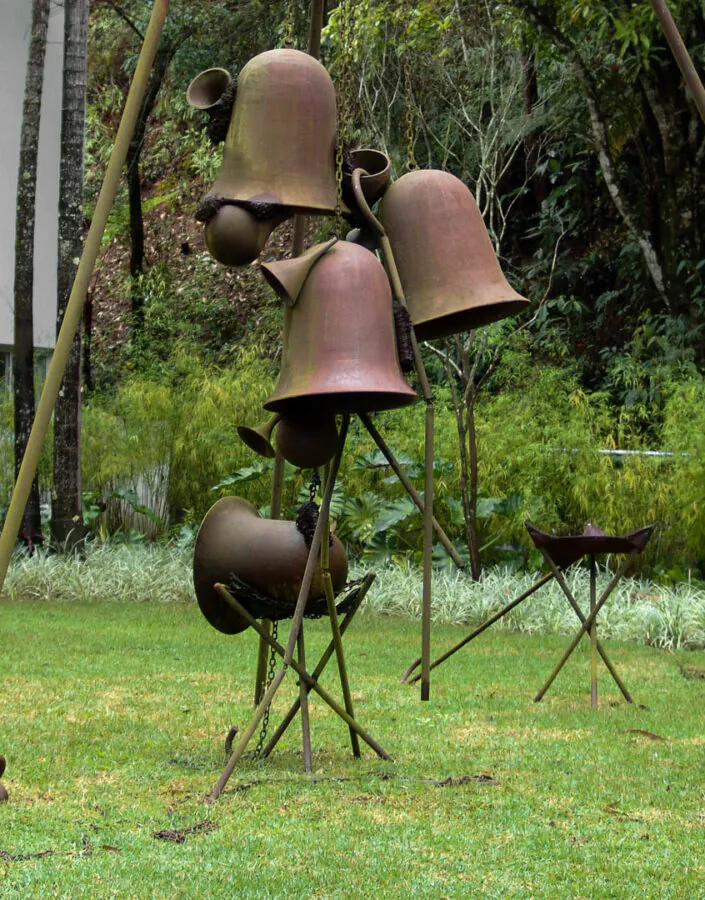
![Dominique Gonzalez-Foerster, Desert Park, 2010, [detalhe], concreto, areia, livros diversos, dimensões variáveis. Foto: Marcelo Coelho](https://www.inhotim.org.br/wp-content/uploads/2021/04/inhotim_acervos_desert_park_dominique_gonzales-1-705x900.jpg.webp)
![Giuseppe Penone, Elevazione, 2000-01, [detalhe], bronze, 1000x600x600. Foto: William Gomes.](https://www.inhotim.org.br/wp-content/uploads/2021/04/inhotim_acervos_elevazione_giuseppe_penone-1-1-705x900.jpg.webp)